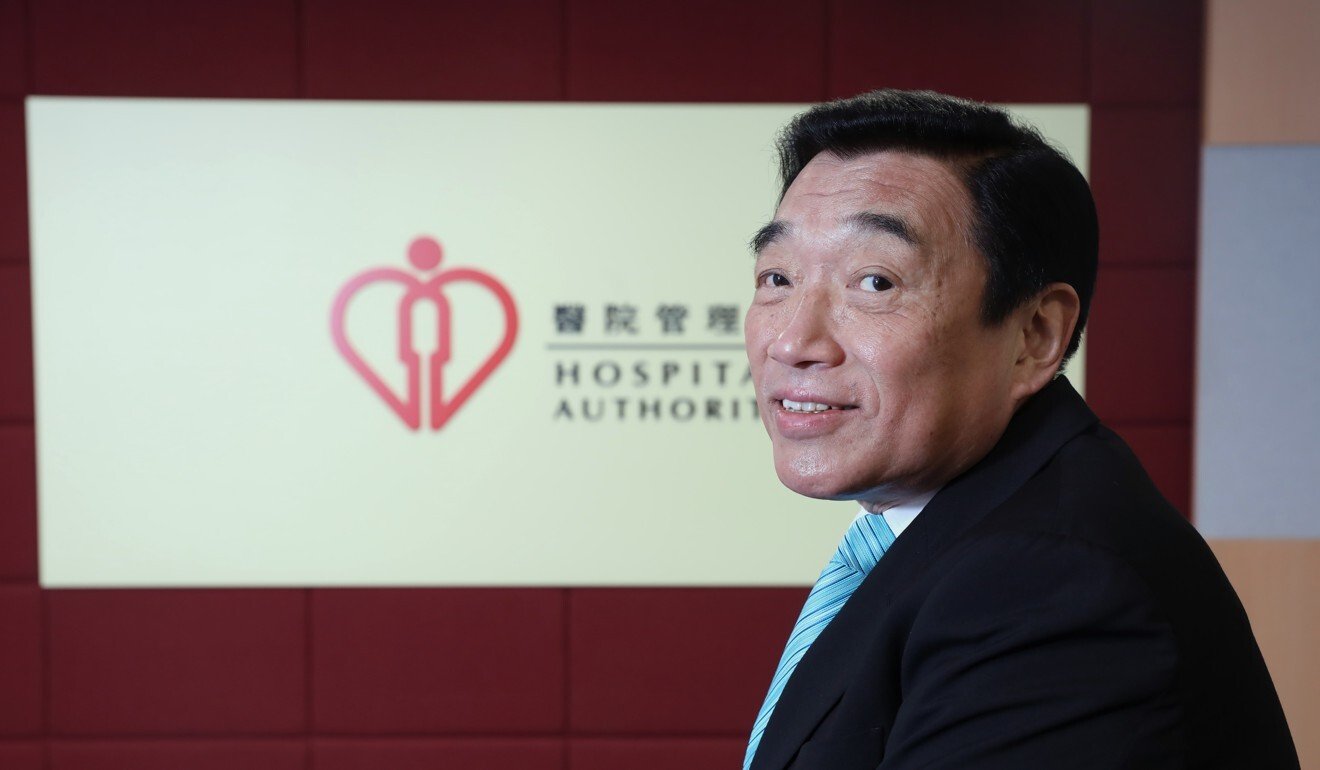
Coronavirus pandemic exposes Hong Kong’s inadequate links between public, private hospitals as patients left waiting for treatment
- ‘Non-urgent’ cases postponed as overburdened public hospitals focus on Covid-19 patients
- Only a small number of public patients have been referred to private hospitals for treatment
Ava Ma expected to have a non-malignant ovarian tumour removed in a public hospital in March, after waiting for almost three years for surgery.
“I was hoping to get the surgery done, after waiting so many years,” Ma said, adding that she was worried her condition might deteriorate while she continued waiting.
Pandemic drives rethink of Hong Kong’s hospital needs: authority chief
Critics say the pandemic has exposed the inadequate partnership between Hong Kong’s private health care sector and its overburdened public system, as the private sector could have played a bigger role providing beds, isolation wards and even coronavirus tests.
Ma, a 49-year-old single mother who gets by on monthly government handouts of a few thousand Hong Kong dollars, cannot afford faster but expensive private health services.
So she has no choice but to wait for her surgery, with no idea when it might happen.
“I feel we haven’t done a lot in public-private partnership,” Hospital Authority chairman Henry Fan Hung-ling told the Post, adding that he has felt this way since joining the board in 2018.
“Colleagues have their concerns, such as quality control, pricing,” Fan said. “They are also worried that if we do too much public-private partnership, would more of our staff go to the private sector?”

The private sector handles 10 per cent of hospital admissions and about 70 per cent of those needing outpatient care.
There has been more collaboration between the public and private sectors in recent months for treatments other than Covid-19, but the actual numbers remain low.
Before the start of the pandemic, there already were eight treatments and surgeries included in the public-private partnership programme.
These included cataract surgery and diagnostic imaging for cancer patients. Since the start of the pandemic, phototherapy for babies with jaundice, radiotherapy for cancer patients, caesarian sections for women giving birth, and treatment of limb fractures have been added.
Between late February and April 15, 66 babies, five cancer patients and 15 pregnant women were referred to private hospitals.
Fan said the pandemic forced the authority to accelerate collaboration with the private sector, transferring more patients to private hospitals for treatment at public sector prices.
“Even when we resume all our services, the partnership will not be reduced,” he said.
Medical sources said surgeries for patients with breast or colorectal cancer, and cystoscopy procedures might be covered by the partnership in future.
2 new infections end Hong Kong’s 5-day break as ‘more imported cases expected’
Given the uncertainty over when the pandemic will end, the authority was unable to say how long its services would remain disrupted, keeping public sector patients waiting.
Under the current arrangement, all confirmed Covid-19 cases are treated in public hospitals, which have a total of about 1,200 isolation beds.
“The capacity of private hospitals was limited,” Fan said, adding that hospitals in both sectors did not have enough protective gear.
Private hospitals defended their limited role during the pandemic, saying the authority referred only a small number of patients to them.
Dr William Ho Shiu-wei, chairman of the Hong Kong Private Hospitals Association which represents the city’s 12 private institutions, said only a small number of isolation beds were available at private hospitals.
“Even if the Hospital Authority used all the isolation beds in private hospitals, the help would not be significant,” Ho said.
He said the private hospitals had to set aside those beds for suspected Covid-19 patients and those confirmed to have other infectious diseases such as tuberculosis.
If all those beds were given to Covid-19 patients, he said, the private hospitals might have to stop admitting other patients as there would be no facilities for patients suspected to have the coronavirus or other contagious diseases.
He was in favour of referring non Covid-19 patients from the public sector to be treated at private hospitals, but conceded that not enough had been done so far.
“Regrettably, the number of referrals has been disappointing so far, and has done very little to relieve the pressing needs of patients whose treatments are delayed,” he said.

In terms of screening Covid-19 patients, the total number of specimens submitted by private doctors under a partnership scheme accounts for only about 5.5 per cent of more than 150,000 tests done by the health department, public clinics and hospitals.
Dr Gabriel Choi Kin, immediate past president of the Medical Association, agreed that private doctors could do more in screening but said the government had not helped them obtain sufficient protective gear.
Given that Hong Kong has 6,000 to 7,000 private doctors, half of them specialists, he felt the Health Authority could do more to refer public sector patients to them, including for scheduled surgeries.
Mental health risks for coronavirus medical staff with insomnia
Tim Pang Hung-cheong, a patients’ rights advocate from the Society for Community Organisation, urged the authority to expand its partnership with the private sector, to help shorten the waiting time for patients.
He also suggested admitting coronavirus patients without symptoms, or with only mild symptoms, to private hospitals.
Additional reporting by Victor Ting
This is the second of a four-part series on the 100th day of Hong Kong’s Covid-19 crisis. Other parts of this series have examined the deepest fears held by some of the city’s medical heroes; how the pandemic has officials rethinking plans for Hong Kong’s public hospitals; and, the harrowing account of a musician who was part of the city’s Covid-19 bar cluster.
Help us understand what you are interested in so that we can improve SCMP and provide a better experience for you. We would like to invite you to take this five-minute survey on how you engage with SCMP and the news.





